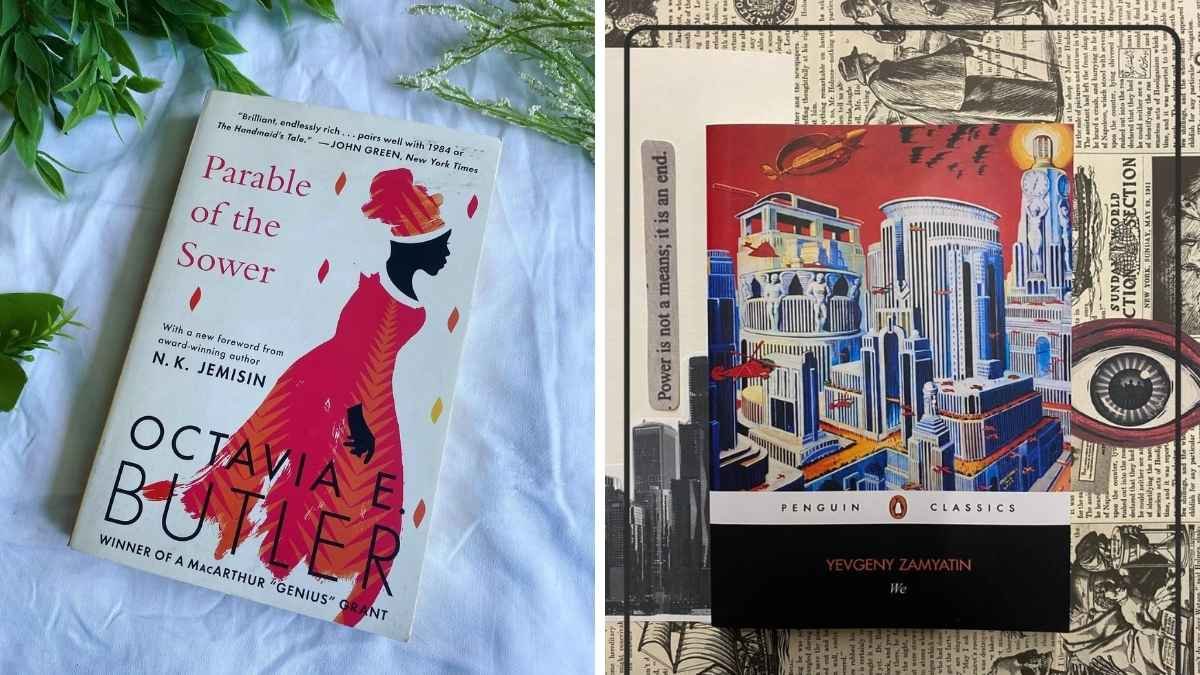
In a world where we’re constantly scrolling, swiping, and skimming, the art of observation has become a rare skill. But what if slowing down to truly see the world around you could unlock creativity, deepen understanding, and even transform your daily experiences?
These books aren’t just about looking—they’re about learning to see with clarity, curiosity, and a fresh perspective. Whether you’re a writer, artist, or simply someone seeking mindfulness, these titles will rewire your perception of the ordinary and uncover the extraordinary.
1. The Art of Noticing by Rob Walker

Rob Walker’s The Art of Noticing is a pocket-sized manifesto for mindful observation. In an age of digital overload, he argues that the key to happiness lies in training our senses to engage with the world. Walker challenges readers to retrain their eyes to see the overlooked—a weathered park bench, the rhythm of a stranger’s walk, or the texture of morning light. His exercises, like “Notice Something You Hate,” teach us to confront discomfort and find beauty in the mundane. The result? A sharper mind and a deeper connection to your surroundings.
Walker’s approach isn’t just theoretical. He shares stories of people who’ve transformed their lives by observing more deeply, from chefs noticing flavor nuances to artists capturing fleeting emotions. By the end, you’ll see unseen layers of the world unfold in ways you never imagined.
2. On Writing Well by William Zinsser

While primarily a guide to crafting compelling prose, On Writing Well doubles as a masterclass in observation. Zinsser argues that the power of observation is the backbone of great writing. He teaches readers to notice details others miss—the way sunlight filters through leaves, the cadence of a conversation, or the unspoken tension in a room. For Zinsser, observation isn’t passive; it’s an active choice to engage with life’s textures.
His advice? Carry a notebook and jot down phrases, images, or emotions that catch your eye. Over time, these small observations transform the mundane into the memorable. Whether you’re writing a novel or a grocery list, this book will sharpen your sensory awareness.
3. Bird by Bird by Anne Lamott

Anne Lamott’s iconic guide to writing is peppered with wisdom about paying attention. She urges readers to pay attention to the small things—the sound of rain on a roof, the way a child’s laughter echoes in a room. Lamott believes that observation is the antidote to overwhelm. By breaking life into “small assignments” (like watching birds at a feeder), we train ourselves to savor moments that would otherwise slip by.
Lamott’s anecdotes are relatable and humorous, like her childhood fear of writing essays in one gulp. Instead, she learned to focus on tiny, manageable details. As she writes, “Almost all good writing begins with terrible first efforts. You need to start somewhere.” Her message? Transform ordinary moments into stories worth telling.
4. Zen and the Art of Motorcycle Maintenance by Robert M. Pirsig

This philosophical novel follows a man and his son on a cross-country motorcycle trip, blending metaphysics with mechanical tinkering. At its core, the story is about engaging deeply with the present moment. Pirsig’s protagonist learns that true understanding comes not from rushing to conclusions, but from patiently observing how things work—whether it’s a motorcycle engine or human relationships.
The book’s beauty lies in its subtlety. Pirsig describes how fixing a bike requires noticing the smallest details: a loose bolt, a clogged spark plug, or the texture of oil on your hands. These acts of careful observation become metaphors for living a mindful, grounded life. By the end, you’ll find meaning in the mundane and approach challenges with curiosity instead of frustration.
5. The Power of Now by Eckhart Tolle

Tolle’s spiritual guide teaches that the stillness of observation is the gateway to inner peace. He argues that most of our suffering stems from being lost in thoughts about the past or future. To break free, we must anchor ourselves in the present through mindful breathing, noticing sensory details, or simply watching leaves sway in the wind.
Tolle’s advice is deceptively simple: become an “observer of your mind.” By creating space between your thoughts and your awareness, you unlock a deeper sense of calm. As he writes, “You are not your thoughts. You are the awareness behind them.” Whether you’re meditating or doing dishes, this book will help you unlock deeper truths about existence.
6. How to Read a Book by Mortimer Adler and Charles Van Doren

This classic guide isn’t just about literature—it’s a masterclass in active observation through reading. Adler and Van Doren teach us that true understanding comes from engaging deeply with texts, asking questions, and noticing nuances. They argue that reading well requires slowing down, annotating margins, and connecting ideas across disciplines.
The authors emphasize that observation fuels comprehension. By training yourself to spot themes, contradictions, and underlying assumptions in what you read, you sharpen your ability to observe patterns in all areas of life. Whether you’re deciphering a poem or a news article, this book transforms passive consumption into active discovery.
7. The Tao of Pooh by Benjamin Hoff

Using A.A. Milne’s beloved characters, Hoff illustrates how mindful observation is the foundation of wisdom. Winnie-the-Pooh embodies “the Uncarved Block”—a state of simple awareness where one notices life’s small joys without overthinking.
Hoff contrasts Pooh’s patient observation with Owl’s intellectualizing and Eeyore’s pessimism. Through these charming examples, he shows how attentiveness to the present moment leads to contentment. This book isn’t just whimsy—it’s a gentle reminder to slow down and savor the details that Pooh so effortlessly appreciates.
8. The Alchemist by Paulo Coelho

While primarily a novel, The Alchemist is a profound meditation on observing life’s signs. Santiago’s journey to find his “Personal Legend” hinges on his ability to read omens, listen to his heart, and notice the language of the universe.
Coelho teaches that the world speaks to those who listen. From interpreting desert silences to understanding the flight of hawks, Santiago’s quest demonstrates how observation bridges the gap between the tangible and the mystical. This book will inspire you to look beyond surfaces and trust the subtle guidance that surrounds you.
9. How to Use Your Eyes by James Elkins

James Elkins’s How to Use Your Eyes is a fascinating exploration of the act of observation. This book isn’t just about art; it’s about how we can use our eyes more effectively to see the world around us. Elkins takes readers through 31 examples of everyday objects and phenomena that we often overlook, such as x-rays, stamps, maps, and the winter ice halo around the sun.
He challenges us to look closely at the familiar. For instance, he encourages readers to examine the intricate details of a stamp or the patterns in a city’s manhole covers. By doing so, we train our brains to notice the beauty and complexity in the mundane. Elkins’s approach is both scientific and poetic, making this book a delightful read for anyone interested in deepening their sensory awareness.
10. The Artist’s Way by Julia Cameron

While focused on creativity, Cameron’s classic emphasizes that observation is the wellspring of artistic expression. Her “Morning Pages” exercise—a daily dump of unfiltered thoughts—trains writers to notice inner landscapes, while “Artist Dates” encourages the exploration of sensory experiences.
Cameron argues that creative observation requires permission to play. By documenting dreams, eavesdropping on conversations, or studying shadows, artists (and non-artists alike) develop a keener eye for life’s poetry. This book transforms observation from a passive skill into an active, joyful practice.
11. The Philosophy of Andy Warhol (From A to B & Back Again) by Andy Warhol

Andy Warhol’s The Philosophy of Andy Warhol is a unique blend of autobiography and philosophical musings. First published in 1975, this book offers a glimpse into the mind of one of the most influential artists of the 20th century. Warhol discusses a wide range of topics, from love and beauty to fame and success, all with his signature blend of irony and detachment.
The book is structured as a series of vignettes, making it an easy read that encourages deep reflection on everyday life. Warhol’s observations are both humorous and profound, challenging readers to see the world in new ways. For example, he writes, “Sometimes people let the same problem make them miserable for years when they could just say, So what. That’s one of my favorite things to say. So what.” This simple yet powerful statement invites readers to question societal norms and embrace a more carefree approach to life.
12. The Art of Travel by Alain de Botton

Alain de Botton’s The Art of Travel is a philosophical exploration of how we experience the world through travel. De Botton argues that true travel isn’t about reaching a destination; it’s about the journey and the observations we make along the way. He examines how different artists and thinkers have approached travel, from the Romantic poets to modern-day adventurers, and how their experiences can enrich our own.
One of the most compelling sections discusses how the act of travel can change our perspective. De Botton describes how a simple change of scenery can make us see our own lives with new clarity. He also explores the idea of “traveling in place,” suggesting that we can gain as much insight from observing our neighborhoods as we can from visiting distant lands. This book is a thoughtful reflection on how travel can be a tool for self-discovery and deeper observation.
13. The Hidden Life of Trees: What They Feel, How They Communicate by Peter Wohlleben

Peter Wohlleben’s The Hidden Life of Trees is a captivating journey into the secret world of forests. This book reveals that trees are far more than just silent, stationary plants—they are complex, sentient beings with their forms of communication and social structures.
Wohlleben, a forest ranger, shares his firsthand experiences and scientific research to illuminate the hidden lives of trees. He explains how trees form friendships, support each other in times of need, and even have their versions of families. For example, he describes how trees send out warning signals to their neighbors when they are under attack from pests. This book challenges our perceptions of nature and encourages us to see the forest as a living, breathing community.






